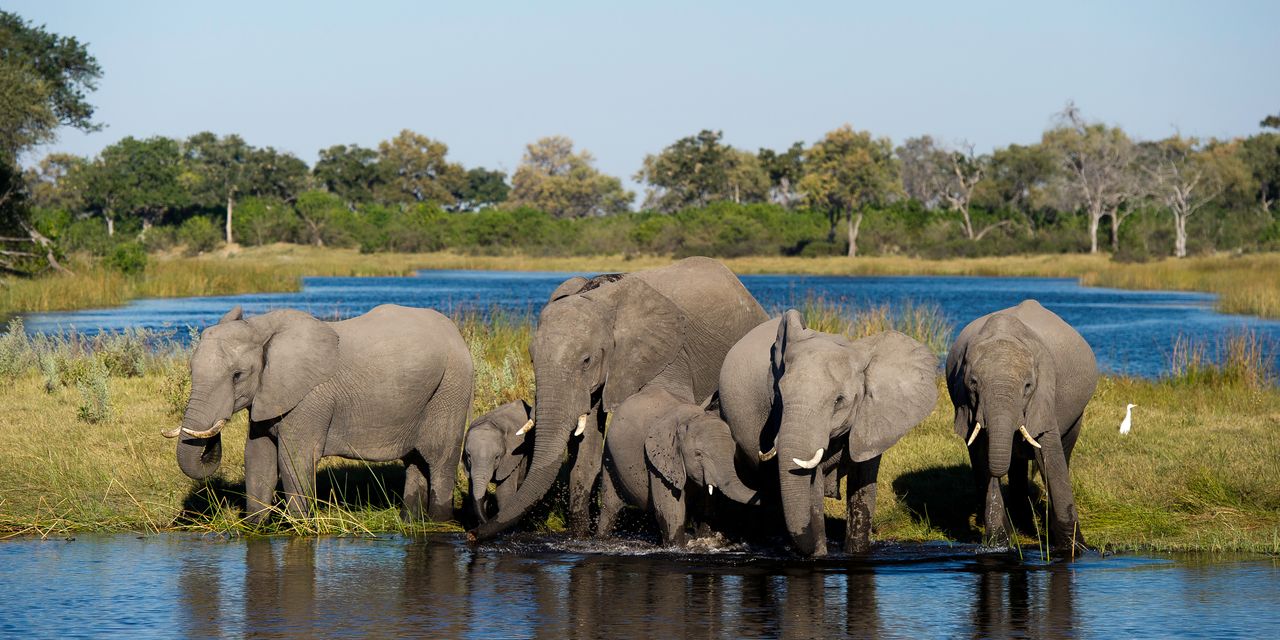Ecotourism company Wilderness, founded by two guides in Botswana, Africa, in 1983, has expanded into eight countries with more than 3,000 staff members, and 60 camps and lodges.
Its expansion over the past four decades came with a concerted effort to conserve, by protecting the people and wild species in the areas in which it operates. In fact, the company is structured around what it calls 4Cs—commerce, conservation, community, and culture.
Since 2018, one of its major stakeholders has been the Rise Fund, founded by TPG, a California-based alternative asset management firm, in partnership with Bono of the rock band U2 and tech billionaire Jeff Skoll. The fund measures its social and environmental gains equally to market-related financial returns.
“We are a magnet for people who’ve got the love of conservation, love of wildlife and their habitats that’s out there,” says
Keith Vincent,
chief executive of Wilderness.
Wilderness helps protect 6 million acres of land across Africa. “That’s obviously a huge responsibility and costs a lot of money. So we use ecotourism to pay for sport tourism,” Vincent says.
Wilderness CEO Keith Vincent
Courtesy of Wilderness
THE EXPERIENCE
Wilderness operates in eight countries: Botswana, Rwanda, Namibia, Zimbabwe, Zambia, Kenya, Tanzania, and South Africa. It offers some of the world’s most luxurious accommodations and journeys in exquisite locations as close to the wilderness as possible.
For example, it has camps in the pristine wilderness areas of the Okavango Delta, Central Kalahari, and game-rich Linyanti in Botswana, home to a number of endangered species, such as the African wild dog and leopard, and the largest elephant population in the world.
The company operates a variety of camps that fall into three different tiers: premier, classic, and basic or adventure. “Obviously, the top-tier camps are those that marry a fantastic wildlife area with an exceptional camp product, service, delivery of food, and everything else that comes along with it,” Vincent says. “But there’s some super wealthy people who actually like to go on a more adventurous trip rather than just spending money on accommodations,” he says.
While more wealthy travelers are seeking wellness-related experiences, “adding a little bit more demand on amenities like a spa treatment or a gym,” Vincent says, “Wildlife is still the reason they come. It has not changed at all for the last 40 years.”
Plus, now the exciting thing for Wilderness is that “people really want to be involved much more in the wild areas, they want to travel with their families and they want to feel like their money is going somewhere that’s also doing good,” he says.
As a destination management company, Wilderness has a team of guides, medical staff, and its own air charter subsidiary.
Little Kulala, Namibia
Courtesy of Wilderness
THE PRICE
A safari experience through Wilderness can cost thousands of dollars, depending on the journeys and the size of the group.
“We operate in this very top niche, so we want to do it with high value, low volume tourism. That’s a big key for us,” Vincent says.
A solo trip to Okavango Delta for six nights at three camps with transportation, meals, and activities starts at US$10,120. A 12-night, South African safari trip, combining wildlife encounters and natural landscapes at four different locations, costs US$20,700 each person.
For families, a package of six nights at two Wildness camps in Namibia’s Sossusvlei Dunes and Damaraland areas will start at US$4,510 per person. The itinerary will include something for everyone, including exploring the Sesriem Canyon, formed over thousands of years by the Tsauchab River, a guided tour of the ancient desert, and hot-air ballooning over the landscapes.
WHAT’S THE GOOD?
Wilderness supports two non-profit partners, Children in the Wilderness and the Wilderness Wildlife Trust.
Through the Wilderness Wildlife Trust, it funds more than 20 conservation, community, and anti-poaching projects every year. Children in the Wilderness promotes sustainable conservation through leadership development and education of rural children in Africa.
One core component of sustainability is scientific research about wild species—how to give some particular species space to regrow and how to protect their habitats, Vincent says. “Equally important is community development and education, making sure that the communities within the boundaries of those wild areas feel that they have a stake.”
“We do this through conservation clubs, curriculum, training, and environmental education initiatives for the young people, starting from primary schools,” he says. “The children will grow up to be conservation leaders.”
Bisate Lodge in Rwanda
David Crookes, Courtesy of Wilderness
Another side of community development is to help solve human-wildlife conflict, helping villages create safety barriers to wild lions, elephants, or hippos, Vincent says.
Last month, Wilderness partnered with local Botswana non-profit, Communities Living Among Wildlife Sustainably, to help reduce human-wildlife conflict in the Okavango Delta. The region is central to the largest stronghold of lions in Southern Africa, but villagers living in the neighboring areas struggle with livestock depredation by lions, leading to some shooting and poisoning.
Combining tradition and technology, the partners ask villagers to name the lions in their local language and deploy satellite collars to follow their real-time locations, so they can be warned when the lions are in striking distance of their cattle post. Additionally, the partners also established the first Communal Herding Program in Botswana, hiring local herders and providing them extensive training. Wilderness intends to purchase this rurally farmed beef.
WHAT’S NEXT
Wilderness is planning to expand its operations in South America this year, its first move outside of Africa, Vincent says. The decision is tied to its ambitious conservation goal of doubling land under Wilderness’ protection to 12 million acres within the next five years.
“I’m quite heavily involved in a variety of stuff around teaching and passing on the sustainability model,” Vincent says. Asia, especially Indonesia and Malaysia, also has great potential for replicating the model. “It’s not impossible that you might see a pop-up in North America,” Vincent adds.
Read the full article here










